 Music
Music  Music
Music  History
History 10 Less Than Jolly Events That Occurred on December 25
 Weird Stuff
Weird Stuff 10 Funny Ways That Researchers Overthink Christmas
 Politics
Politics 10 Political Scandals That Sent Crowds Into the Streets
 Weird Stuff
Weird Stuff Ten Bizarre Facts About The Doge Meme
 Our World
Our World 10 Ways Your Christmas Tree Is More Lit Than You Think
 Movies and TV
Movies and TV The 10 Coolest Stars to Set Sail on The Love Boat
 History
History 10 Things You Didn’t Know About the American National Anthem
 Technology
Technology Top 10 Everyday Tech Buzzwords That Hide a Darker Past
 Humans
Humans 10 Everyday Human Behaviors That Are Actually Survival Instincts
 Music
Music 10 Surprising Origin Stories of Your Favorite Holiday Songs
 History
History 10 Less Than Jolly Events That Occurred on December 25
 Weird Stuff
Weird Stuff 10 Funny Ways That Researchers Overthink Christmas
Who's Behind Listverse?

Jamie Frater
Head Editor
Jamie founded Listverse due to an insatiable desire to share fascinating, obscure, and bizarre facts. He has been a guest speaker on numerous national radio and television stations and is a five time published author.
More About Us Politics
Politics 10 Political Scandals That Sent Crowds Into the Streets
 Weird Stuff
Weird Stuff Ten Bizarre Facts About The Doge Meme
 Our World
Our World 10 Ways Your Christmas Tree Is More Lit Than You Think
 Movies and TV
Movies and TV The 10 Coolest Stars to Set Sail on The Love Boat
 History
History 10 Things You Didn’t Know About the American National Anthem
 Technology
Technology Top 10 Everyday Tech Buzzwords That Hide a Darker Past
 Humans
Humans 10 Everyday Human Behaviors That Are Actually Survival Instincts
10 Cases Of Wild Plant Theft From Across The Globe
When we think of grand heists, we usually imagine a dashing gentleman thief sneaking into a museum to make off with some massive, priceless diamond. We don’t usually imagine someone crawling through the dirt with a pillowcase and an old spoon to look for endangered greenery or someone pocketing a tiny snippet from a botanical garden. But many thieves are turning to plant poaching as a means of filling their pockets.
For those paying exorbitantly to stock their own private gardens, an ancient shrub is worth far more than any diamond. For the various thieves doing the dirty work, the money all looks the same. Rare flora the world over are at risk of being consumed into a black market driven by profits in the billions. It weighs on the minds of conservationists in every country: How do you stop the theft of something growing wild in its natural habitat?
10 Venus Flytraps Of The Carolinas
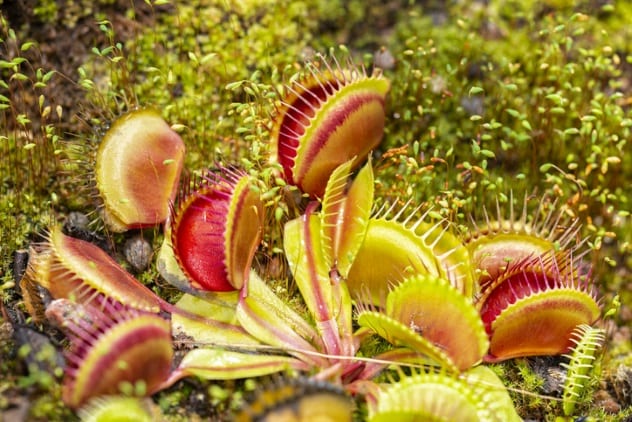
The Venus flytrap, upon its discovery, was heralded as the greatest wonder of the plant kingdom. In 1760, North Carolina’s colonial governor, Arthur Dobbs, kept a plant diary in which he described the flytrap’s unique feeding technique. When an insect is unfortunate enough to trigger the hairs along the inside of the flytrap’s leaves, they snap shut. The snapping motion of the flytrap and its tooth-like trigger hairs made it into a cultural touchstone. Flytrap-inspired plants have featured in The Addams Family, Little Shop of Horrors, and the Super Mario Bros. games. North Carolina proudly claims the Venus flytrap as its official carnivorous state plant and has devoted conservation efforts toward preserving it.
But fame can have drawbacks, even for a carnivorous plant. Wild flytraps once covered North and South Carolina but have been beaten back to a 145-kilometer (90 mi) radius around Wilmington, North Carolina. This is the only place where they still grow in their natural habitat, and conservationists fear that poachers will be responsible for the extinction of the wild flytrap. In 2014, theft of Venus flytraps was made a felony offense that could carry up to 25 months in prison. In 2016, Paul Simmons Jr. became the first person to face the felony charge for poaching 970 flytraps from Holly Shelter Game Land in Pender County, along with three co-conspirators. While poaching can’t be stopped completely due to the size of the area, the law has been a proven deterrent. Poaching is tracked by checking a number of plots for the telltale holes left when plants are stolen. After Simmons was prosecuted in 2016, only six of 18 plots checked had signs of poaching.[1] Before, there had been as many as 15 out of 18.
9 The World’s Smallest Water Lily From Rwanda
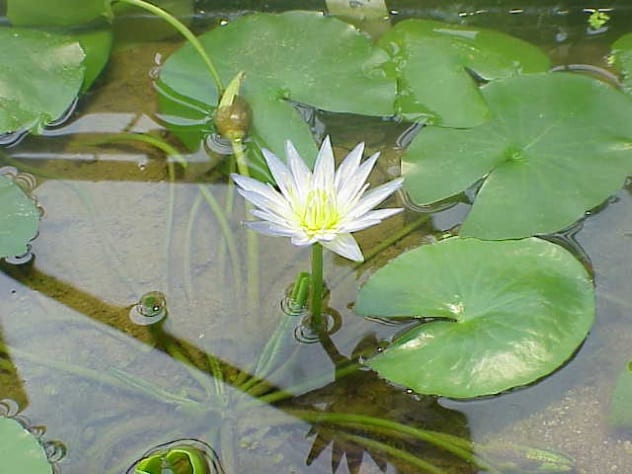
The world’s smallest water lily, Nymphaea thermarum, is a plant that nearly went extinct once already when its original habitat, a tiny area near a hot spring in Mashyuza, Rwanda, was drained by local agriculture. Luckily, botanist Eberhard Fischer of the Koblenz-Landau University in Germany, took samples when he first encountered the lily in 1985. Not so luckily, the samples would not propagate. In 2009, Fischer transferred a handful of seeds and seedlings to the Royal Botanical Gardens, Kew, in London. Horticulturist Carlos Magdalena found that the tiny water lily grew differently from others. Instead of beginning life in water, as all other water lilies do, this one begins life in warm mud. After this discovery, Kew grew about 30 tiny lilies and started to plan how to reintroduce them to their original home of Rwanda.
The world’s smallest water lily was saved from extinction, but not from poaching. In 2014, a thief wandered into the Princess of Wales Conservatory between 8:30 AM and 2:55 PM, snipped off a bud, and left undetected. Sam Johnson, the Richmond-branch CID detective constable leading the inquiry, had very little hope of catching the poacher. The lily is so small in size that its leaves are only a centimeter across, and its flower is rarely bigger than a fingernail. Its size would make it easy to hide during the theft. Its growing conditions and appearance would make it even harder to spot out in the world. Since it grows in mud and not water, it would be hard for anyone but a trained botanist to pick it out of a lineup of potted plants in damp soil. Johnson said at the time that the best chance of finding the African lily would be if the person who now owns it bragged about their rare find on social media.[2] To date, no one has.
8 Orchids Of The United Kingdom
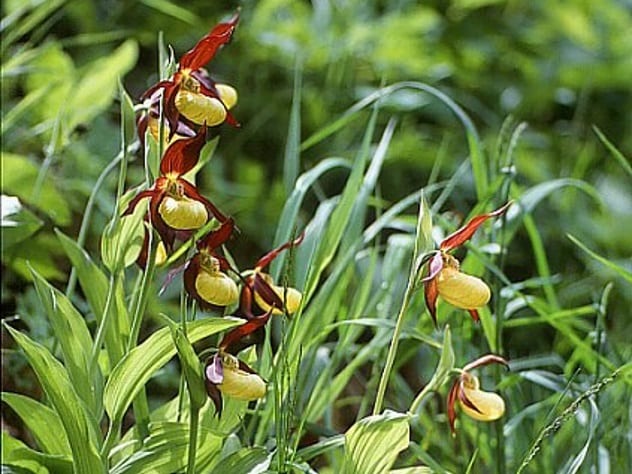
The UK has also had poaching troubles with its native plants since the Victorian era, when an obsessive desire for orchids and ferns stripped the landscape of its natural beauties. The killarney and woodsia ferns have never recovered, and one rare orchid, the summer lady’s tresses orchid, never will. In 1956, the last one in Britain was plucked from its home in the New Forest in Hampshire. While some regions across Central Europe and the Mediterranean still see these orchids from time to time, they are extinct in their UK, Holland, and Belgium habitats.
Orchids in particular are exquisitely adapted to the exact habitat in which they grow. Most are slow growers and have a symbiotic relationship with local fungi that is crucial to propagation. Fortunately, orchids make up for their difficult youths with great longevity. The lady’s slipper orchid was thought to have gone extinct after the orchid craze of the Victorian era until one was found growing in Yorkshire in 1930. This particular orchid still grows to this day, drawing crowds of plant enthusiasts when it blooms. Unfortunately, it also draws the eye of thieves and collectors. It is likely the last of its kind, and collectors consider this orchid priceless. But this plant is well-known for resisting transplant efforts, and authorities fear that attempts to steal it could result in its death. One collector attempted to carry off the whole plant in 2004, and another was successful in stealing a large clipping in 2009. Although the plant was protected 24/7 by guards and CCTV, it was eventually and carefully moved to a secret location to protect it from further poaching.[3]
7 Orchids Of Asia
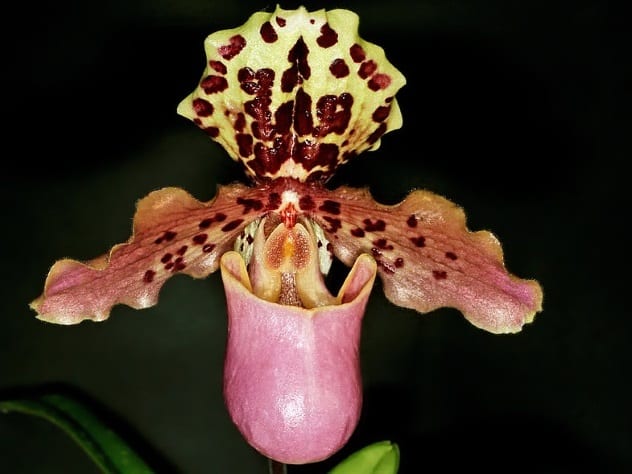
While the Victorians’ orchid obsession destroyed or endangered many of their own, the cost paid in Asia for orchid demand has been even higher. Due to past poaching, international trade of slipper orchids is highly regulated. Of the 84 species of slipper orchids assessed by the International Union for the Conservation of Nature, 99 percent face the threat of extinction. Specific orchids are even more regulated, such as any orchid in the Paphiopedilum genus. These orchids are all illegal to trade internationally, but that hasn’t stopped the black market. In 1997, a new species, Paphiopedilum vietnamense, was discovered in Vietnam. The orchid was on the US market before any trade permits were legally given in Vietnam, and the rare flower was extinct in the wild before long.
Naturally, this still didn’t stop the obsessive trade and collection of orchids. In 2004, the head of research and development at Medpharm, a drug company, was caught at Heathrow Airport with more than 100 illegal orchids. Among his smuggled collection were two orchids so rare that they were thought to be extinct at the sites where the scientist collected them. Some countries across Asia are introducing new programs to cut down on smuggling in the hopes of saving their native orchids. In Seoul, South Korea, civilians can earn about $8,000 a year just for passing on any information they hear about poaching.[4] The penalty for black market trade in protected species has been increased to three years of jail time or a $26,000 fine. It is still unclear whether or not these new programs will be enough to slow the multimillion-dollar orchid trade.
6 Cypress Bromeliads From Florida
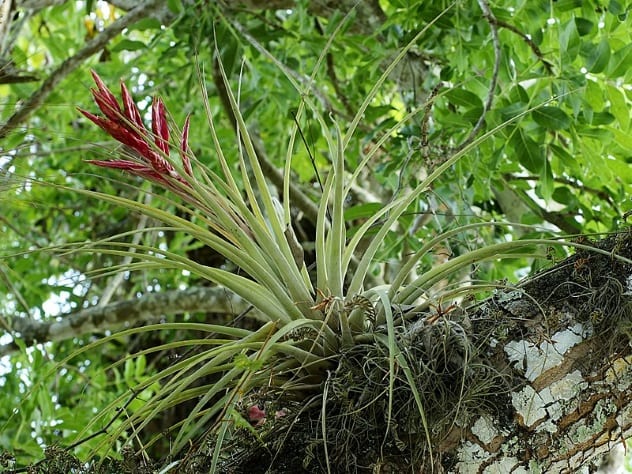
A number of bromeliads are air plants, meaning that they get all of their nutrients from light and water. While many, like Spanish moss, have the reputation of being parasites, these plants are actually epiphytes. Actual parasites, like wisteria, sap nutrients from the plants they occupy. Epiphytes, however, only use their roots to hang harmlessly on the surface of trees, rocks, and whereever they happen to find themselves. They grow in tropical and subtropical environments, but most bromeliads of the United States grow in Florida. There are 16 native species, and three are found at Loxahatchee refuge: the endangered cardinal wild pine, the threatened reflexed wild pine, and the common ball moss. For the wild bromeliads, being found is the problem. Once plentiful throughout Florida, some now have been scavenged nearly out of existence. Rangers at the Loxahatchee refuge are doing everything in their power to keep their wild bromeliads safe.
But only two rangers are responsible for patrolling the refuge, which is a tiny fraction of the manpower needed to stop poachers in a 143,874-acre park.[5] Still, an unlucky few have been caught in the act. US Fish and Wildlife Service ranger William Calvert has caught people carrying armfuls and boxes of endangered air plants out of the refuge. The motive for plant thieves is, more often than not, money. The rarer bromeliads that once dotted the cypress trees of the Florida swamps go for $15 to $20 on the black market. The average fine for bromeliad theft is from $275–$475, but the maximum penalty for petty plant theft is one year in federal prison and $100,000 in fines. If the thief intended to sell or transport the plants or stole upwards of $350 of protected plants, then it becomes a felony carrying a maximum five year sentence and $250,000 in fines.
5 Cycads Of The World
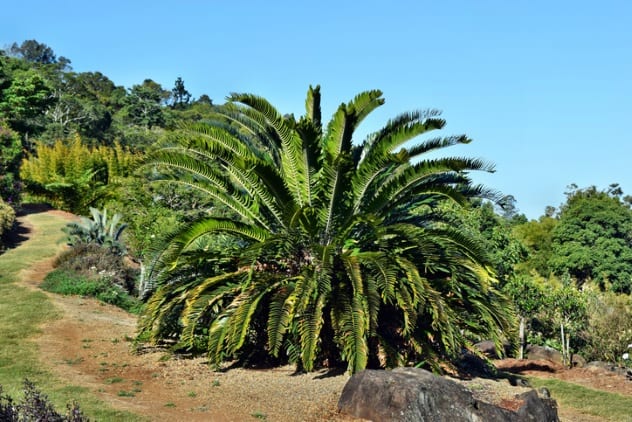
The tour guide at Durban Botanic Gardens on the coast of South Africa introduces the Wood’s cycad as the world’s loneliest plant. It is the only one of its kind and a male, so it will likely never propagate naturally. This isn’t too uncommon for the various cycad species of the world. The cycad is the world’s oldest seed plant, dating back far beyond humanity to the time of the dinosaurs. But after surviving for 340 million years, many cycads are endangered or extinct in the wild today.[6] The rarity of the cycad, combined with its extremely slow growth cycle, makes its theft wildly lucrative. Ten cycads stolen from Kirstenbosch Gardens in 2014 had a value of roughly $35,000. In 2016, South African authorities began targeting the collectors behind the poaching. Using their rare plants as bait, they began catching rare plant collectors in the act. One suspect, Jan Adriaan van Vuuren of Pretoria East, was found to have several endangered cycads endemic to South Africa. He faces a steep fine or three years’ jail time.
Rare cycads are targeted everywhere that they grow, though. Thieves entered the Royal Botanic Garden in Sydney, Australia, during visiting hours to carry out a heist in stages. On their first visit, they loosened the soil around the cycad. After returning to finish the job, they arranged some leaves pulled from the rare plant so that security wouldn’t immediately notice the hole. This absurdly ingenious plan worked like a charm, and no one was caught. In a decidedly more daring heist, a group of knowledgeable poachers broke into South Florida’s Fairchild Tropical Botanic Garden during the onset of Hurricane Frances in 2004 to steal 31 of their rarest cycads. This theft, coincidentally, included a clone of the Wood’s cycad.
4 The Saguaro Cacti Of Arizona
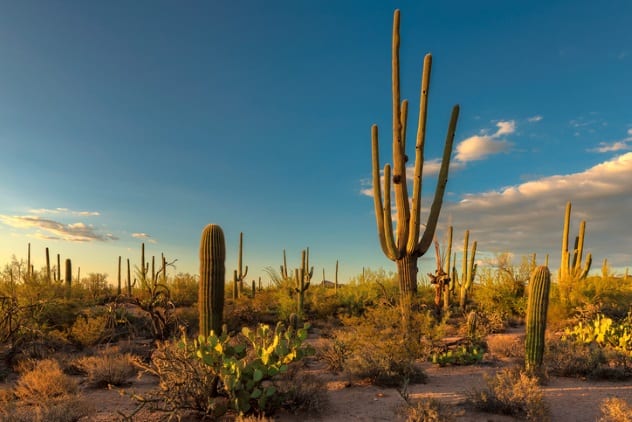
The saguaro cactus is an iconic symbol of the American Southwest that has become extremely popular among landscapers and plant enthusiasts worldwide. The popularity of succulents and cacti in the last few years has boosted demand for the towering saguaro, which can go for $100 per foot of height on the black market. Some saguaro cacti reach over 18 meters (60 ft) high and would fetch a nice chunk of change for any poacher. Considering that it takes some species of cacti a decade to even reach maturity, that’s actually a steal. This is a headache for the Cactus Forest in Saguaro National Park, where poachers have taken to ripping plants right out of the ground.[7]
The park’s chief ranger, Ray O’Neal, has spent many of his days wandering the forest in search of the obvious holes left where massive cacti once stood. It is almost impossible to catch criminals when they first steal the cacti, making it hard to calculate the true size of the poaching problem. In 2014, more than 2,600 stolen cacti were seized at US borders. O’Neal and his team have devised a clever solution to this problem and hope to deter the thieves. In 2018, they began inserting microchips into their cacti. While the chips can’t track a cactus, they can identify stolen cacti when they are found. Park officials are able to scan cacti at local nurseries, flea markets, roadside stands, and the various other places where black market cacti are sold. The chips and the publicity that they drew have already scared off potential thieves. No thefts have been noted since the plan was announced.
3 Bonsai Of Japan
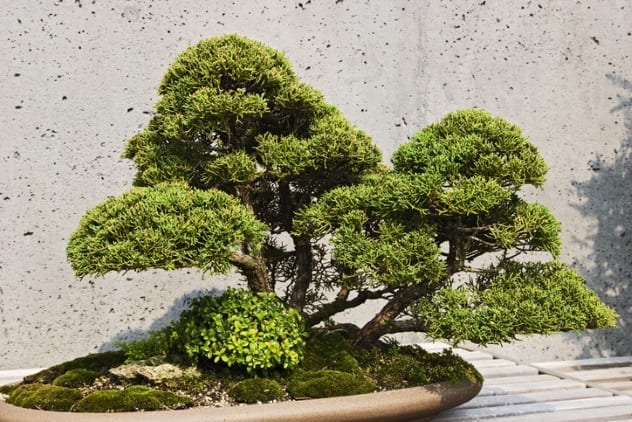
Seiji Iimura is a fifth-generation bonsai master who tends to an impressive outdoor garden of 3,000 trees in Japan’s Saitama Prefecture. On January 31, 2019, Iimura discovered that some of his most prized and valuable trees had been stolen.[8] Among them was a 400-year-old shimpaku juniper, which was collected from a cliff in the Edo period. It has been rumored that the shimpaku juniper may be the tree referenced in a famous Japanese painting. But the process of creating the shimpaku bonsai only starts with collecting the tree from a perilous height after traversing the Ishizuchi mountain range. The true difficulty of creating this miniature tree lies in the process of slowly shrinking and shaping it to fit its small container.
The carefully grown, centuries-old bonsai is valued between $54,000 and $90,000 by Iimura’s estimate. Iimura and his wife, Fuyumi, tend the roughly 5,000-hectare park, which has been open to the public until now. They want to keep their garden open but have now installed security cameras and plan to later put up a fence. Fuyumi Iimura emphasized to reporters that the trees are like children to them, and losing such a precious heirloom bonsai is like losing a limb or a child. This isn’t unusual among bonsai masters, who care for miniature trees that can represent many generations of work and connect the past, future, and present of a family.
Without much hope of recovering their prized bonsai, Iimura only asks one thing: “I want whoever took the bonsais to make sure they are watered. The shimpaku lived for 400 years. It needs care and can’t survive a week without water.”
2 Ginseng From Appalachia
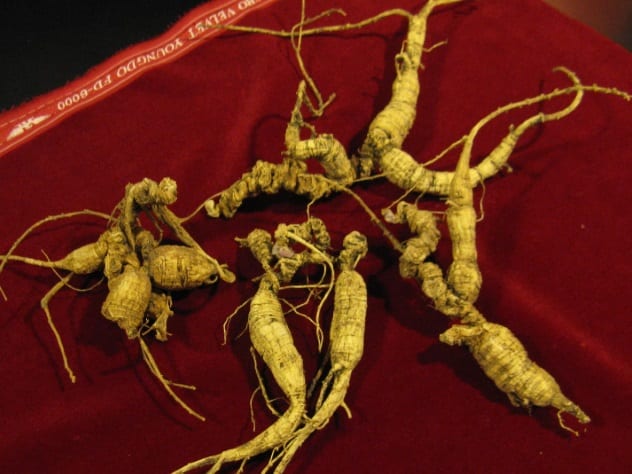
The American ginseng root is an ancient plant that was used medicinally long before various European countries started to colonize the Americas. When a French missionary figured out its connection to Asian ginseng, it was shipped to China for appraisal. Chinese buyers confirmed that there was a demand for this “new” ginseng, which they found to have opposite properties to their own version. Asian ginseng was considered to be warming, whereas the American variety was considered to be stabilizing and cooling. The demand for American ginseng in China skyrocketed and started a centuries-long tradition of harvesting the plant in the wilds of Appalachia.[9]
For many, ginseng harvest became a family tradition. This seriously complicated efforts to stop irresponsible harvesting when American ginseng started to thin out in the wild. States like Kentucky and Indiana have put systems in place to at least track the harvests. American ginseng can only be sold to licensed dealers, who keep track of how much is picked and in what county. Freshly harvested ginseng can sell for $75 to $100 a pound, and dried, it can go for up to $350. Around late December, when the picking season ends, a pound can sell for up to $1,000. But this plant is much luckier than most on this list. Preservation isn’t a matter of stopping the harvest altogether. Instead, conservationists just need those harvesting the plants to wait until the seeds have matured and to make sure to leave them buried where the plant was found. It’s that simple to propagate American ginseng, but many people who dig up roots for cash don’t do it.
1 Wildflowers Everywhere
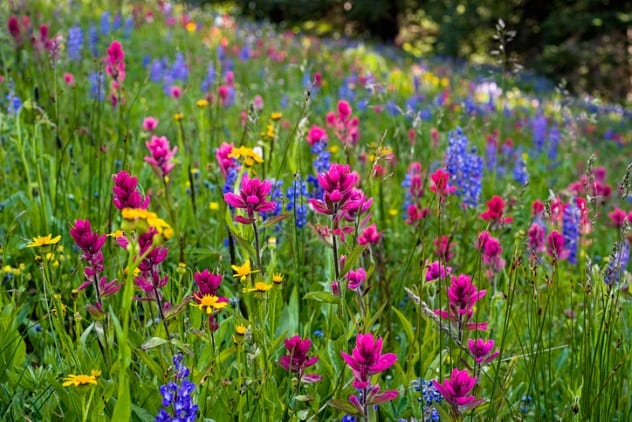
It’s a rule many of us learn in childhood. On some field trip, road trip, or nature walk, children will want to bring home a bit of the wild splendor. Usually, that’s when a responsible adult swoops in to explain that you don’t pick the wildflowers. They’re for everyone. Picking them is also against the law in many places, even if the wildflower is profoundly common and nowhere near endangered. That’s because most plants were once flourishing in the wild before overharvesting and habitat destruction took their toll. One half of preventing that is protecting the habitat, but the other half is keeping people from snatching up wildflowers. Plants of most concern are orchids, snowdrops, lilac, and other attractive blooms, but this varies from place to place.
Picking wildflowers is often pointless, as the delicate flowers wilt quickly. Pulling up the whole plant can preserve it for longer but makes it harder to transport. Still, many varieties don’t transplant well. This hasn’t stopped poachers, who have instead targeted the seeds of more sensitive species. The United States National Park Service discovered this technique when a large batch of seeds was confiscated at Zion National Park in Utah. Poaching seeds breaks the cycle that many wildflowers rely on to propagate. Flowers grow, die, and deposit seeds that grow new flowers the next year.
When someone plucks a few too many flowers or, for example, spends many days collecting every seed they can find, it upsets that cycle. Plant-lovers will lament the loss of natural beauty, but the real cost of wildflower poaching tends to creep up later.[10] Species of birds, bats, and bees that rely on the pollen and nectar of native flowers begin to thin out, and that can disrupt an entire ecosystem as each animal up the food chain misses meals. Once this ripple effect takes place, reintroducing the plants gets harder since there aren’t enough pollinators anymore. It’s a sticky problem caused by sticky fingers that doesn’t look to resolve anytime soon.
Renee is an Atlanta-based graphic designer and writer.
Read about more bizarre heists involving unusual loot on 10 Unusual Things Thieves Are Currently Stealing and Top 10 Modern Cases Of Corpse Theft.








